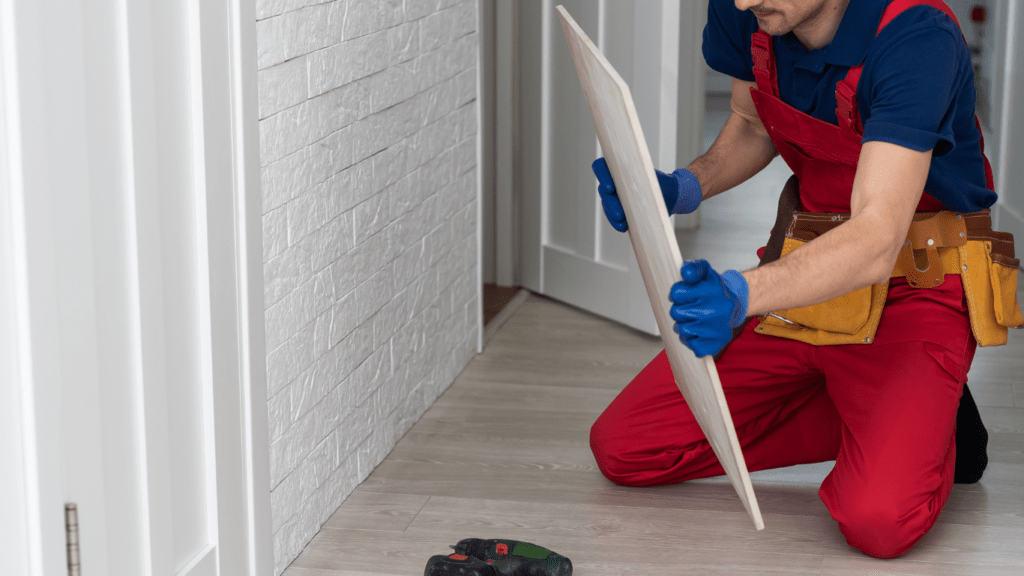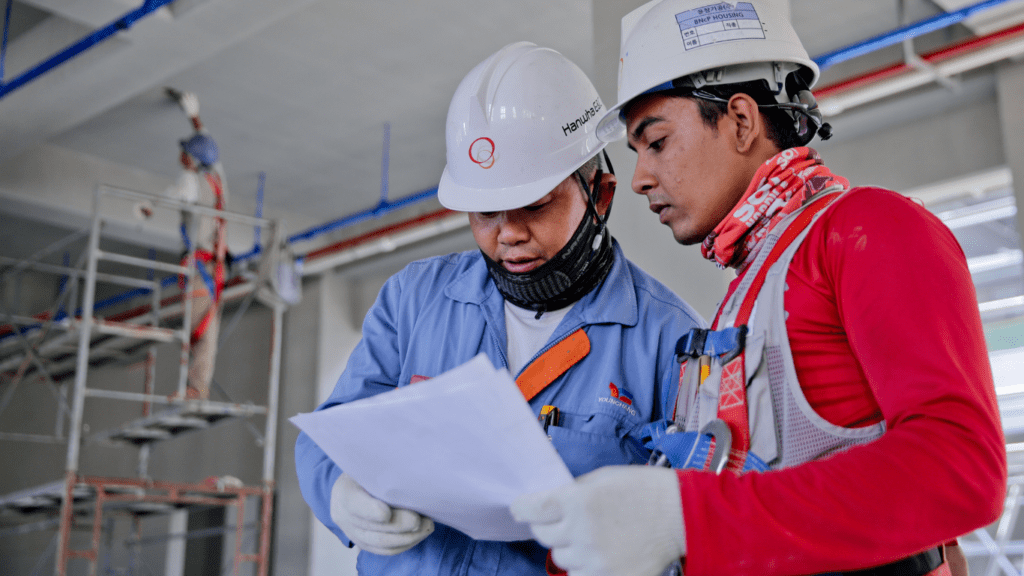Understanding The Scope Of Your Renovation
Defining your renovation’s scope is crucial. It influences costs, timelines, and decisions.
Assessing Your Needs And Goals
Evaluate current space functionality. Identify issues and improvements. For instance, if storage is lacking, consider built-in shelves or extra closets. Align these needs with your lifestyle. Establishing clear goals ensures that the renovation meets your expectations.
Setting A Realistic Budget
Calculate expected expenses. Include materials, labor, permits, and contingencies. For example, the average bathroom remodel costs $10,000-$15,000. Allocate funds based on priority needs while reserving 10%-20% for unexpected costs. A realistic budget helps prevent project delays and financial strain.
Creating A Detailed Plan
Develop a step-by-step plan. Start with design concepts, followed by selecting materials and choosing contractors. Ensure each stage has a timeline. For instance, demolition might take one week, while electrical work could span two weeks. Documenting these details will streamline the renovation process and maintain progress tracking.
Choosing The Right Professionals
Choosing the right professionals is vital for a successful home renovation. Engage experts to ensure quality and efficiency.
Hiring An Architect Or Designer
Hiring an architect or designer can significantly impact the quality of your renovation. Architects provide comprehensive designs and plans, ensuring structural integrity and compliance with local codes. Designers focus on aesthetics and functionality within your space, selecting materials and coordinating styles.
I always recommend checking credentials and portfolios. For instance, verify licenses and review previous projects to gauge expertise. Clients should also ask for references to understand the professional’s reliability. Initial consultations help discuss vision and confirm compatibility. Clear communication of expectations and budget constraints ensures alignment.
Finding A Reliable Contractor
Finding a reliable contractor is crucial for smooth execution. Contractors oversee the entire renovation, managing schedules, materials, and labor. Start by seeking referrals from friends and family or using trusted online platforms like Angie’s List or HomeAdvisor.
Once I shortlist potential contractors, I conduct interviews to gauge experience and communication skills. Verify their licensing and insurance status to protect against liabilities. Request detailed bids for accurate cost estimation. Reliable contractors provide timelines and clarify payment terms, fostering transparency.
Working With Subcontractors
Working with subcontractors may be necessary for specialized tasks like plumbing or electrical work. Subcontractors bring expertise in specific areas, enhancing project quality. Your main contractor often recommends subcontractors, but personal due diligence remains important.
I review subcontractors’ qualifications to ensure they meet project standards. Verified reviews and past work speak to their competence. Clear agreements detailing scope, timelines, and payment prevent conflicts. Regular check-ins with both contractor and subcontractors maintain project alignment.
By selecting the right professionals, I ensure my home renovation meets expectations and remains on track.
Obtaining Necessary Permits And Approvals
Navigating the permit and approval process is crucial for a smooth home renovation. Missing or incorrect permits can lead to costly delays and fines.
Understanding Local Building Codes
Familiarity with local building codes ensures compliance with safety and zoning laws. I always start by researching the specific codes applicable to my area. Local municipal websites often provide detailed information. Reviewing this upfront helps avoid legal issues and ensures the renovation meets required standards.
Submitting Permit Applications
Submitting thorough and accurate permit applications is essential for approval. I gather all necessary documents, including project plans and specifications. It’s smart to reach out to the local building department to confirm application requirements and associated fees. This step prevents unforeseen hurdles.
Scheduling Inspections
Scheduling inspections is part of maintaining project scheduling. Inspections verify that the work aligns with codes and regulations. I contact the building department to schedule necessary inspections at different stages of the project, like after framing or plumbing installations. Regular inspections help identify issues early, keeping the renovation on track.
Sourcing Materials And Products
Sourcing quality materials is vital for a successful home renovation. This section covers key aspects of selecting and purchasing supplies.
Selecting High-Quality Materials
- Identifying superior materials directly impacts the longevity and appearance of your renovation.
- Begin by researching best-in-class materials, focusing on durability and maintenance requirements.
- Opt for hardwood flooring if you seek durability, while laminate may suit tighter budgets.
- Assess product certifications and read reviews from previous buyers.
- This provides firsthand insights into material performance. Visit local showrooms to physically inspect items before purchase.
Comparing Prices And Options
Price comparison ensures you get the best deal for your budget. Start by listing all required materials, such as tiles, paint, and fixtures. Use this list to gather quotes from multiple retailers. Many online platforms offer price comparison tools, aiding in quick assessments of different suppliers. Don’t just settle for the lowest price; consider quality, warranties, and return policies. Sometimes higher-priced goods offer better long-term value due to superior durability. In-store promotions and bulk purchase discounts can also yield cost savings.
Purchasing And Storing Supplies
Proper purchase timing and storage preserve material quality. Order supplies slightly ahead of schedule to avoid delays. Confirm delivery dates with vendors to ensure timely arrivals. Once materials arrive, store them in a dry, cool area to prevent damage. For instance, store wood in a stable environment to avoid warping, and keep paint containers tightly sealed to prevent drying out. Label each item and maintain an inventory list for easy access during different renovation phases.
These steps in sourcing materials and products help ensure your renovation stays on track and meets your standards.
Managing The Renovation Process

Effectively managing your home renovation ensures everything progresses smoothly. Here’s how to keep each phase on track.
Creating A Project Timeline
A clear project timeline organizes tasks and sets realistic deadlines. Break down the renovation into phases, such as planning, demolition, construction, and finishing. Assign specific dates to each phase based on scope and complexity. For instance:
- Planning Phase (4 weeks): Design finalization, permit applications
- Demolition Phase (2 weeks): Removal of old fixtures, debris clearance
- Construction Phase (8-12 weeks): Structural work, installation of new materials
- Finishing Phase (2-4 weeks): Painting, final installations, inspections
Estimate each phase’s duration, factoring in potential delays. Utilize project management tools like Trello or Asana to track progress. Regularly update the timeline to reflect current status.
Handling Demolition And Construction
During demolition, ensure safety measures are in place. Hire professional demolition services if tackling extensive work. Remove furniture, cover immovable items, and seal off unaffected areas to protect from dust and debris.
In the construction phase, clear communication with contractors and workers is crucial. Conduct regular site visits to monitor progress and address any issues immediately. Ensure that all work adheres to local building codes and specifications. A detailed construction plan helps maintain alignment with project goals.
Managing Unexpected Challenges
Unexpected challenges are inevitable. Whether encountering hidden structural issues or supply chain delays, adaptability is key. Allocate at least 10-15% of your budget for contingencies.
When an issue arises, assess the impact on your timeline and budget. Develop a quick action plan in consultation with your contractor. For example, if a delivery delay occurs, adjust the schedule to prioritize tasks with available materials. Keeping open lines of communication with your team enables swift resolutions, ensuring the project stays on track.
Ensuring Quality And Safety
Maintaining high standards of quality and safety is critical in any home renovation. Focus on supervising workmanship, implementing safety precautions, and conducting final inspections.
Supervising Workmanship
I make it a point to oversee every aspect of the workmanship to ensure excellence. Regular site visits let me observe the contractors’ progress and quality of their work firsthand. I look for any discrepancies between the plans and actual work, addressing them promptly. By discussing potential issues with contractors immediately, we can keep the project on track and avoid costly repairs later.
Implementing Safety Precautions
Safety is non-negotiable during a renovation. I introduce safety protocols before the project begins, including clear guidelines on the use of equipment and handling of materials. For instance, I ensure that all workers wear appropriate safety gear like helmets, gloves, and goggles. Keeping the worksite clean and organized helps prevent accidents and injuries. Additionally, I display safety signs conspicuously around the site to remind everyone of potential hazards.
Conducting Final Inspections
Final inspections verify that the renovation complies with all standards. I schedule the final walkthrough with the contractor to confirm that all elements meet the agreed-upon specifications. During this inspection, I check for quality of finishes and functionality of installed systems, like electrical and plumbing. If necessary, I request immediate corrections to any deficiencies before signing off on the completed work. This step is essential to ensure that the renovation not only looks good but also functions safely and efficiently.



 Harry Marriott – Lead Interior Stylist
Harry Marriott is Castle Shelf House’s Lead Interior Stylist, known for his keen eye for detail and expertise in modern and classic home designs. With a background in interior architecture, Harry brings innovative styling solutions to the forefront, ensuring that each home reflects a unique personality. His approach to furniture placement and design trends helps clients create harmonious living spaces that combine aesthetics with functionality.
Harry Marriott – Lead Interior Stylist
Harry Marriott is Castle Shelf House’s Lead Interior Stylist, known for his keen eye for detail and expertise in modern and classic home designs. With a background in interior architecture, Harry brings innovative styling solutions to the forefront, ensuring that each home reflects a unique personality. His approach to furniture placement and design trends helps clients create harmonious living spaces that combine aesthetics with functionality.
